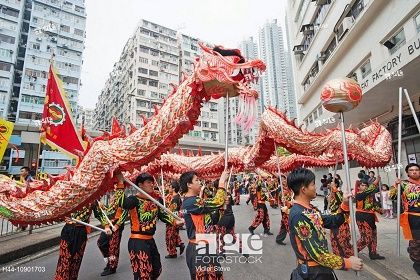The City Of Hong Kong And Its History
Jul 03, 2019 • 1 view
It is famous for beautiful skyline and landscape, cultural diversity rooted in rich history. With all its interesting political revolution, Hong Kong is an extraordinary country to describe it in simple terms. Among other things that people often wonder is whether Hong Kong is a Chinese state or an independent country given its law reforms and the Chinese involvement both in the modern days and ancient times. The country’s history and architecture are rooted in Chinese and English culture making it a multi-cultural country. Known as the glamorous city, modern Hong Kong is a lucrative attraction for luxury shopping.
Situated on the South-East of China, Hong Kong is 426 square miles. It was part of China until the First Opium war in 1842. China lost the war and ceded Hong Kong Island and other surrounding islands to Britain within 60 years. It is one of the most densely populated cities in the world with a population of approximately 8 million.

Hong Kong the name
It has always been an attraction island that encouraged trade and industries and that is how it originally got its name. Translated in Chinese Hong Kong means “Fragrance Harbour” due to the trade of incense or agarwood. The name Hong Kong was influenced by the local Hakka Chen Qun when the British came to Stanley. A misunderstanding resulted in the island to be called Hong Kong.
The Hong Kong hand over
China leased Hong Kong to Britain and the handover meant the lease expired. It is one way of looking at it but it is more complicated than that. In the preceding sections, it has been outlined how Hong Kong and the surrounding islands became British colonies.
Following the handover in 1997, it became Hong Kong Special Administrative Region (HKSAR) in the People’s Republic of China. The SAR is a result of a contractual agreement between Hong Kong and Beijing that established the basic law of government. These meant that Hong Kong has the governing power over its own internal and economic affairs while China controls foreign policies.

Hong Kong after handover
Hong Kong has changed a lot following the handover. There were name changes of important buildings and the picture of Queen Victoria was removed from the post boxes. After British decolonization, some a British monuments and its presence still remain in architecture and the coins.
Even though some of the colonial government regalia still remains, Hong Kong has had great improvements in the economy, architecture and other aspects to mention a few. There is an increase in skyscrapers such as international trade centres and the international commerce centre which has a maximum height of 484 metres. It continues to be one of the luxurious wealthy cities with more individuals owning Rolls Royce than anywhere in the world.
The Chinese and Britain Influence on Hong Kong’s culture
The fusion of British and Chinese culture in one country led to a diversified culture. With a population of approximately 8 million, 92% of the population is Chinese people and the other remaining 8% is non-Chinese pupation. There are various religious groups Christianity, Taoist and many more. The dominating language is Cantonese but following the 1997 handover and the new policies, English and Chinese Mandarin were officially recognised as official languages.
The population of English people is insignificant but during its reign, it left a mark in religion, education, architecture, culture and related aspects. Modern-Day Hong Kong is budding with careers in different professions due to British education. During the British colony, various institutions and colleges were established with missionaries becoming teachers. Many schools were founded by the missionaries some of which created an education system that combined the western-style and the Hong Kong style of education.

